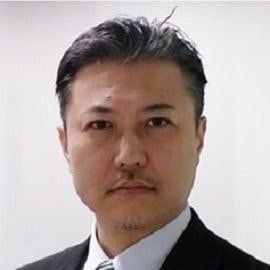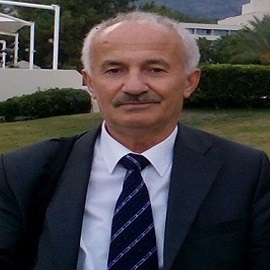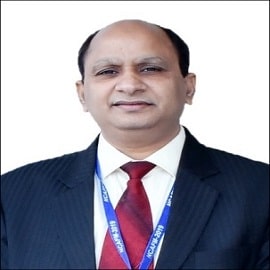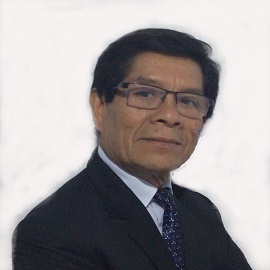Agenda
Conference Schedule
Day 1 full schedule
September 07, 2022 @ -
Directional Ceramic Additive Manufacturing through Lamination Joining in Ultraviolet Laser Lithography

Soshu Kirihara
ProfessorOsaka University
Japan
ABSTRACT
Dielectric ceramic components were fabricated by ultraviolet laser lithography. 2D cross sections were created through dewaxing and sintering by UV laser drawing on spread resin paste including ceramic nanoparticles, and 3D composite models were sterically printed by layer laminations. As the row material of the lithography, ceramic nanoparticles from 500 nm in average diameters were dispersed in to liquid resins from 50 % in volume fraction. The resin paste was spread on a glass substrate at 50 μm in layer thickness by a mechanically moved knife edge. An ultraviolet laser beam of 355 nm in wavelength was adjusted at 10 μm in spot diameter and scanned on the pasted resin surface. Irradiation power was changed from 600 to 700 mW for enough solidification depth for 2D layer bonding. Scanning speed was changed from 50 to 100 mm/s to create fine lattice structures as shown in Figs. 1 (a), (b) and (c). The half wavelength of the incident ultraviolet ray should be comparable with the nanoparticles gaps in the resin paste, therefore the dewaxing and sintering will be realized through the electromagnetic waves resonations and localizations as shown in Fig. 1 (c). Through the layer lamination, the 3D titania structures with 97% in volume fraction were successfully fabricated. The titania crystal structure was analyzed as dual phase of anatase and rutile. After the reheating treatment at 1350 °C for 2 hs, titania components with rutile phase was obtained. The linear shrinkage through the sintering was < 1 %. The diamond lattice with four coordination number of 270 μm in periodicity could diffract electromagnetic waves of 0.25 to 0.45 THz, and exhibit forbidden gaps in transmission spectra for all spatial directions. The dielectric lattice especially is called photonic crystal.

Osam Adiguzel
ProfessorFirat University, Turkey
ABSTRACT
A series of alloy system exhibit a peculiar property called shape memory effect. These alloys are called shape memory alloys; this effect is initiated by cooling and stressing treatments, and performed on heating and cooling processes following the previous treatments, in bulk level, and this behavior is called thermoelasticity. Every step is a result of crystallographic transformations in the material, in crystallographic level. Two successive thermal and stress induced martensitic transformations govern this phenomenon in crystallographic basis. These transformations are also governed by lattice twinning and detwinning reactions.
This property is characterized by the recovery of two certain shapes of material at different temperatures. These alloys possess two unique abilities: the capacity to recover large strains and to generate internal forces during their activation.
Thermal induced martensitic transformation is first order lattice-distorting phase transformation and occurs along with lattice twinning in the material on cooling from high temperatures, and ordered parent phase structures turn into the twinned martensitic structures. The twinned structures turn into detwinned martensite structures by means of stress induced transformation by stressing the material in the low temperature martensitic condition. Thermal induced transformation occurs as martensite variants with cooperative movements of atoms by means of lattice invariant shear in two opposite directions, <110 > -type directions on the {110} - type planes of austenite matrix which is basal plane of martensite.

Dr. Tokeer Ahmad
ProfessorJamia Millia Islamia
India
ABSTRACT
Nanomaterials are among the most challenging areas of current scientific and technological research because of the variety of interesting changes in their properties at nano-dimension. Functional nanomaterials find the possibility for their applications in water splitting processes for hydrogen generation as a renewable source of green energy. Fe3O4 nanocubes were prepared in one pot process for the electrochemical water splitting and supercapacitor applications. Magnetic measurements indicate that the as-synthesized Fe3O4 nanocubes are ferromagnetic at room temperature. The synthesized nanocubes have high specific surface area of 268 m2 g-1, which affects the electro-catalytic activity of the electrode materials. The electro-catalytic performances of the IONPs for the HER and supercapacitors were investigated in alkaline medium at room temperature. Similarly, ultrafine RuO2 nanoparticles have been prepared through a wet chemical method. The catalytic activity of ultrafine RuO2 was examined against the Horseradish peroxidase enzyme (HRP) and applied as sensor for the detection of H2O2 in the solution. Besides that, the stimulating bifunctional electro-catalytic performance of RuO2 nanoparticles was studied under different atmospheric conditions. The studies of Yttrium Ferrite nanoparticles by citrate precursor route reveal the formation of monophasic orthorhombic YFeO3 nanoparticles with fairly uniform distribution of nearly spherical particles, high specific surface area of ~338 m2/g and visible band gap of 2.5 eV.

Vijayaraghavan R
ProfessorSchool of Advanced Sciences
India
ABSTRACT
Oxides based antimicrobials are getting prominent as these offer many possibilities to tune their
anti bacterial activity through chemical doping. Since these materials release Reactive Oxygen Species ( RoS) in aqueous suspension both in presence and light of light due to defects , the activity can be enhanced through doping. We have been investigating ZnO and its antibacterial activity for sometime. Recently , we have manipulated its antibacterial activity through vacancy creation by appropriate dopants.
We have synthesized and characterized micron ZnO, N doped micron ZnO, nanoZnO and Na & La doped ZnO for the chemical manipulation. Oxygen vacancies have been confirmed by XPS. RoS[ OH. H2O2 O2-] has been estimated by PL, UV-visible spectroscopy and chemical titration and correlated to the activity.

Jean-Christophe P. Gabriel
ProfessorUniversite Paris Saclay
France
ABSTRACT
We will report on our liquid-liquid extraction microfluidic device integrated with Fourier Transform Infrared Spectroscopy (FTIR) and X-ray fluorescence (XRF)[1] [2]. We will first present our studies of solvent chemical activities using FTIR spectroscopy [3]. Using this system, we will also present unpublished results of extraction and back-extraction of rare-earth elements using synergic extractants [4, 5]. Indeed, we performed, for the first time, on-line XRF quantification in microfluidics to monitor extraction. This approach allowed us to quickly study the variation of free energies of transfer for the extraction and back extraction of three rare-earth elements at different temperatures. Overall, thanks to our automated approach, we show that thermodynamics and kinetics of extraction can be obtained in less than 12 hours with a resulting liquid waste of less than 20mL.

Suresh Aluvihara
University of PeradeniyaUniversity of Peradeniya
Sri Lanka
ABSTRACT
Clay is an important raw material for the most of building and construction materials because of the relatively strengthen structures of such materials in the raw form or treated form such as the heat treated bricks. The particle size of clay has been identified as a key factor for the variation of such strengths of the structure. The grain sizes of clay are highly depended on the origin of the clay and the different clay types may have different particle sizes even though the particle sizes could be processed purposely using some physical or chemical comminution methods. In the existing research, there were expected to investigate the strengths of the bricks that prepared using three different selected clay types and comparing of the strengths of bricks with their average particle sizes. The clay samples were collected from three different regions in Sri Lanka and those clays were named as anthill clay, brick clay and roof tile clay based upon their uses. A set of brick were prepared with respect to each clay type under the firing temperature of 8000C and the particle size distributions of such raw clays were analyzed using dry sieve analysis methods.

Pedro Angeles Chero
Chemical EngineerNational University of Trujillo
Peru
ABSTRACT
The aggressive behavior of the corrosion in the industry of industrial processes that generates great economic losses in the whole world keeps alert the investigators who every day look for like new materials resistant to this physical-chemical phenomenon has aroused enormous interest in the science of the materials. Given this premise, in the present investigation the objective was to manufacture a super hydrophobic material by the immersion method to be applied in plates of stainless steels SS304 to inhibit corrosion. The super hydrophobic material was manufactured through the immersion of NDM / ethanol, but previously the plates were polished and degreased with an electrochemical process and then integrated into a Zn / Dopamine electrodeposition process at a voltage of 2.5 V for 30 minutes, followed by a heat treatment with air at 180 ° C, to help the transition of the substrate to adhere and obtain a super hydrophobic behavior due to the elimination of moisture inside the steel. The super hydrophobicity was evaluated with the naked eye with a high resolution camera obtaining a contact angle of the water drop with the surface of 153 °. The scanning electron microscope (SEM) was used for its morphological study of the surfaces, showing the roughness produced by the applied treatment. In conclusion, it was possible to manufacture a super hydrophobic material by the immersion method which, when applied to surfaces of SS304 stainless steel plates, inhibits corrosion.



